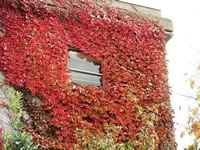Removing and Transplanting English Ivy
Hedera helix
 |
Getting rid of your ivy won't be much of a problem, other than the labor involved to dig or pull it up. While you could use Roundup or a similar application to kill the plants off, you would still have the same task of removing the plants and roots. I resist the use of these poisons as much as possible, because of risks to the environment. Ivy is not likely to regrow from pieces of root which may be left in the soil after you have completed the task of removing the plants. As far as transplanting clumps of ivy to different places on your property, you can read the article I previously wrote on the subject in the garden helper, How to propagate and grow English Ivy to view only that subject.
Search The Garden Helper: